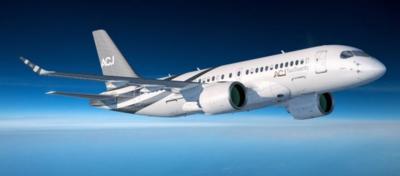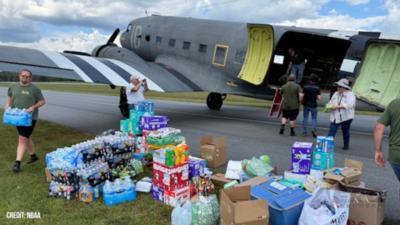Wed, Oct 23, 2024
ACJ Expects the Sector to Contribute $33 Billion More Within Five Years
A recent study led by Airbus Corporate Jets (ACJ) revealed that the US business aviation (BA) industry is expected to generate $182.8 billion by 2029. This is almost $33 billion more than the current economic contribution of $150 billion.

The US is home to over 5,000 public airfields, though less than 500 support commercial airline operations. This makes business aviation a necessary service for connecting passengers nationwide, and its role is only expected to continue growing.
The ACJ study interviewed industry financers and brokers. 85% believed that business aviation will become more crucial within the next five years, and 83% stated that the sector will be vital for emergency response and humanitarian relief missions. This is not hard to believe after seeing how quickly business aviators jumped into action following Hurricanes Helene and Milton.
Other ACJ research, involving senior executives of mega BA corporations, noted that 64% of those interviewed would be willing to use their aircraft for philanthropic services. Out of the 36% who responded negatively, 25% stated that they did not have enough aircraft and 22% blamed a lack of internal management for this type of operation. The other half intends to reconsider this application in the coming three years.

“The wider positive benefits from the business aviation sector are often overlooked,” expressed ACJ President Chadi Saade. “The sector not only supports organizations in their growth plans by enabling them to more easily reach destinations and facilitate important meetings, it also supports many local communities that are not serviced by commercial airlines, creating thousands of jobs from engineers to catering staff to pilots.”
200 Airbus corporate jets are currently in service. The latest ACJ project is its TwoTwenty: ‘The Xtra Large Bizjet.’ It features a cabin twice the size of other ultra-long-range (ULR) aircraft in the same price range. ACJ claims that the jet will produce the same parking footprint and can take off from the same airports while reducing operating costs by 33%. It is capable of flying on a 50% kerosene and sustainable aviation fuel (SAF) blend, though Airbus hopes to switch to 100% SAF fuel for its entire fleet by 2030.
More News
19-Year-Old Pilot Was Attempting to Fly Solo to All Seven Continents On his journey to become the first pilot to land solo on all seven continents, 19-year-old Ethan Guo has hit a >[...]
From 2017 (YouTube Edition): A Quality LSA For Well Under $100k… Aeroprakt unveiled its new LSA at the Deland Sport Aviation Showcase in November. Dennis Long, U.S. Importer>[...]
Hazardous Weather Information Summary of significant meteorological information (SIGMET/WS), convective significant meteorological information (convective SIGMET/WST), urgent pilot>[...]
Aero Linx: Historic Aircraft Association (HAA) The Historic Aircraft Association (HAA) was founded in 1979 with the aim of furthering the safe flying of historic aircraft in the UK>[...]
"We would like to remember Liam not just for the way he left this world, but for how he lived in it... Liam was fearless, not necessarily because he wasn't afraid but because he re>[...]
 TikToker Arrested After Landing His C182 in Antarctica
TikToker Arrested After Landing His C182 in Antarctica Classic Aero-TV: Versatile AND Practical - The All-Seeing Aeroprakt A-22 LSA
Classic Aero-TV: Versatile AND Practical - The All-Seeing Aeroprakt A-22 LSA ANN's Daily Aero-Term (06.27.25): Hazardous Weather Information
ANN's Daily Aero-Term (06.27.25): Hazardous Weather Information ANN's Daily Aero-Linx (06.27.25)
ANN's Daily Aero-Linx (06.27.25) Aero-News: Quote of the Day (06.27.25)
Aero-News: Quote of the Day (06.27.25)




